UK: Northern Eyed Hawkmoth, RUS: Slepoi Brazhnik
Smerinthus caecus Ménétriés, 1857, Enumeratio Corporum Anim. Mus. imp. Acad. Sci. Petropolitanae (Ins. Lepid.) 2 (Lepid. Heterocera): 135.Type locality: [Russia, Chitinskaya Oblast,] "Dahuria?".
[Further details on this species, as well as photos of all stages, can be found on Lepiforum.]
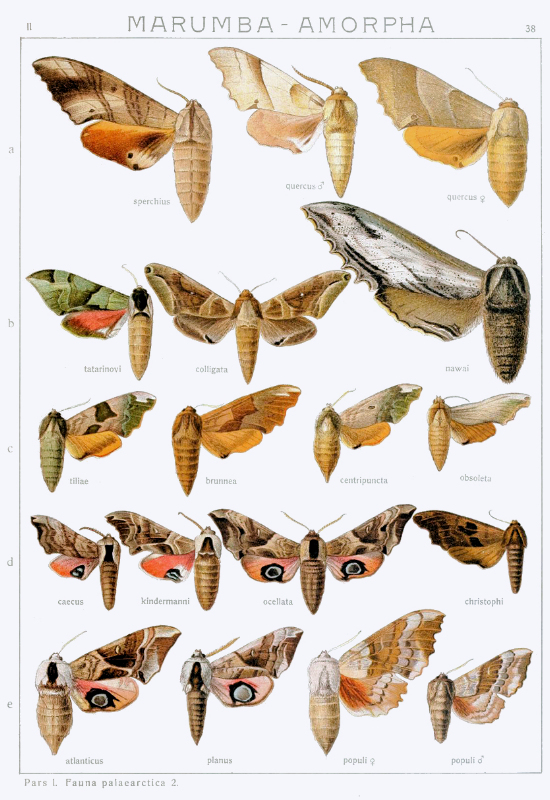
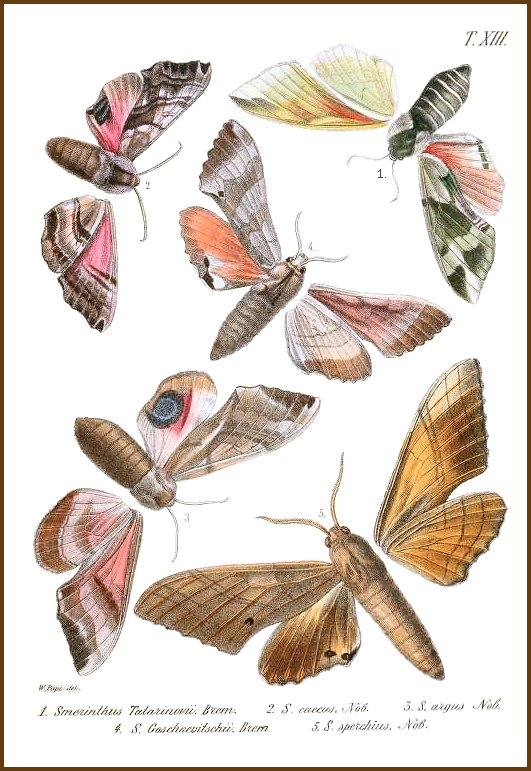
Holarctic; Palaearctic (both eastern and western). Pleistocene refuge: Monocentric -- Manchurian.
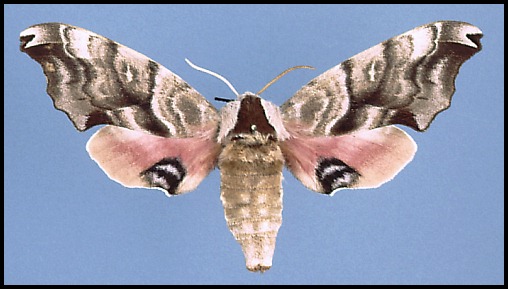
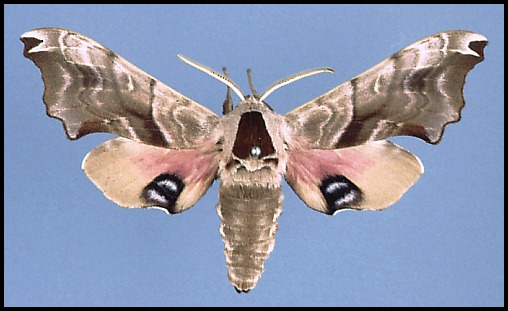
Wingspan: 50--65mm. Sexually dimorphic. Very like a small Smerinthus ocellatus, but with incomplete small black ocelli containing two small blue streaks. The foretibia lacks an apical thorn. Variation even less than in Smerinthus ocellatus, mainly consisting of differences in the amount of blue in the ocelli, and in the intensity of forewing markings.
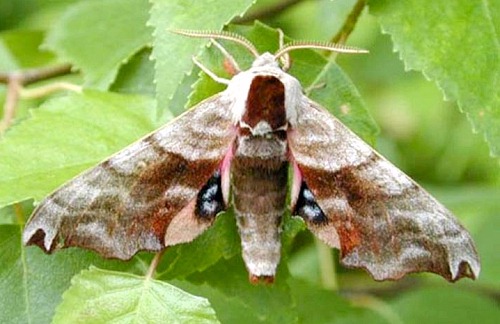
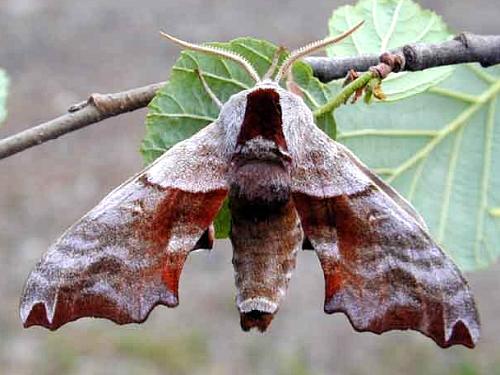
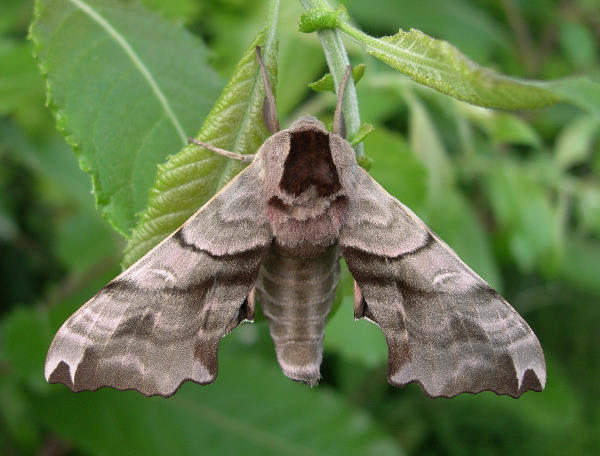
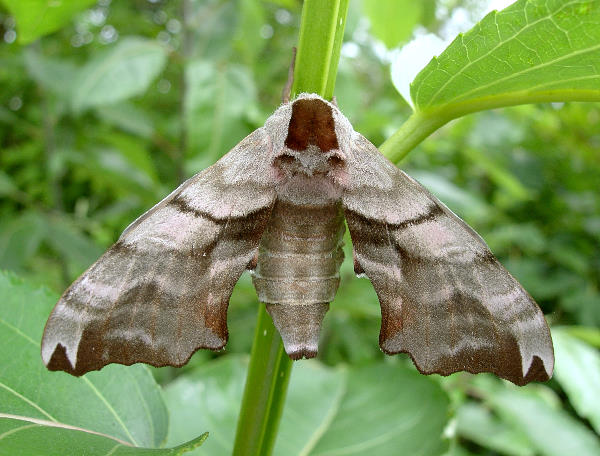
Found in grassy mixed boreal forests (Djakonov, 1911), especially in clearings and along streams, swamps and lake fringes with a good growth of Salix and Betula. Farther east, in Siberia, this species not only occurs in mixed forests, but also in small, isolated patches of deciduous woodland in the steppe belt (e.g. around Karasuk, southern part of Novosibirsk Province (V. Dubatolov, pers. comm. 2010)); however, Salix must always be present. Around Karasuk this species is much rarer than Smerinthus ocellatus (V. Dubatolov, pers. comm. 2010). Like Marumba quercus, it occurs at low population densities and may remain undetected for long periods. Males come freely to light. Pairs before midnight, with the moths staying together until the following night (Pascal Régnier, pers. comm. 2014).
Generally univoltine; June and early July, sometimes in late May. However, Izerskiy (1999) states that there may be a partial second generation in August if the first flies in May\early June, but this may only apply to Siberian populations. In the southern Urals, from mid June until early July (Nupponen & Fibiger, 2002).
OVUM: Oval, pale green with a white sheen.
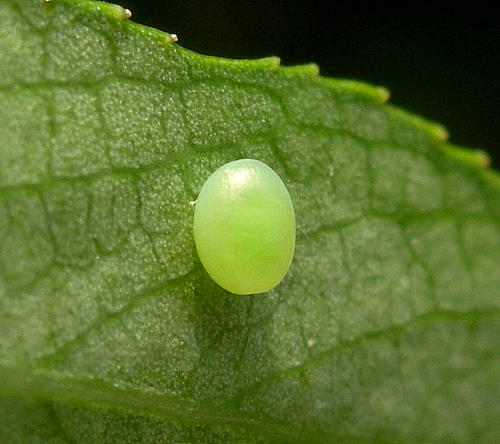
LARVA: Full-fed 70mm. Dimorphic; bluish-green and yellow-green.
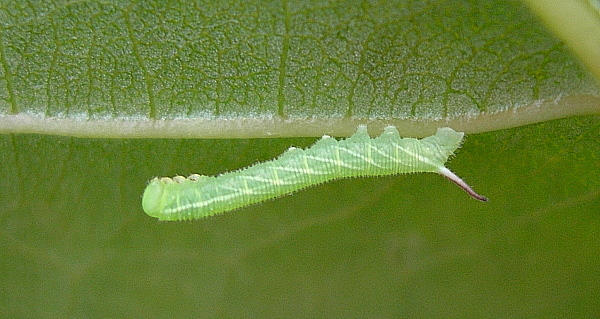
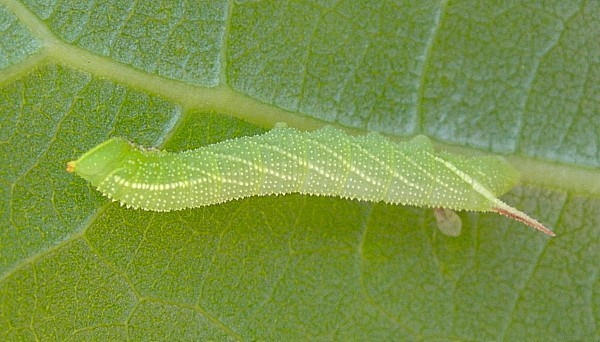
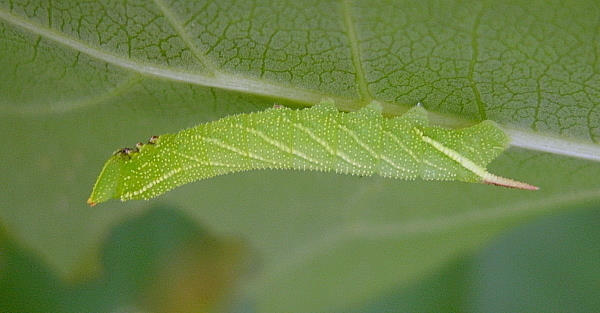
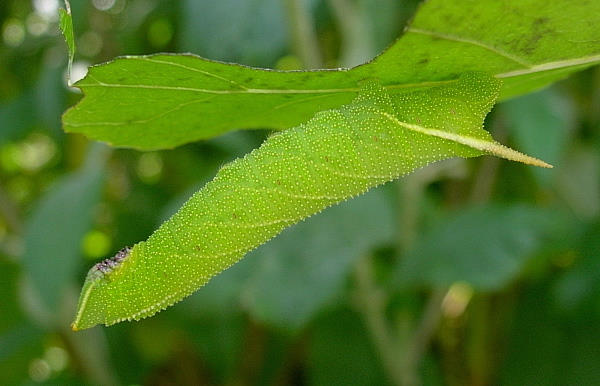
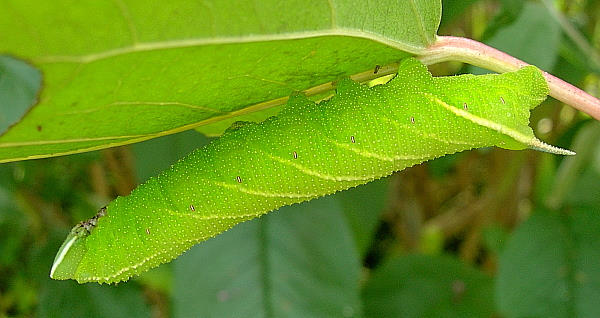
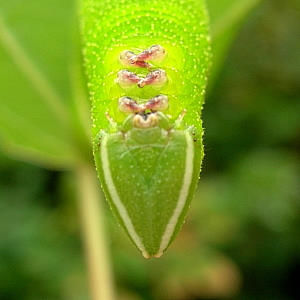
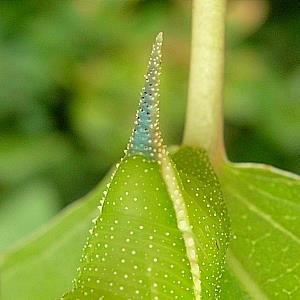
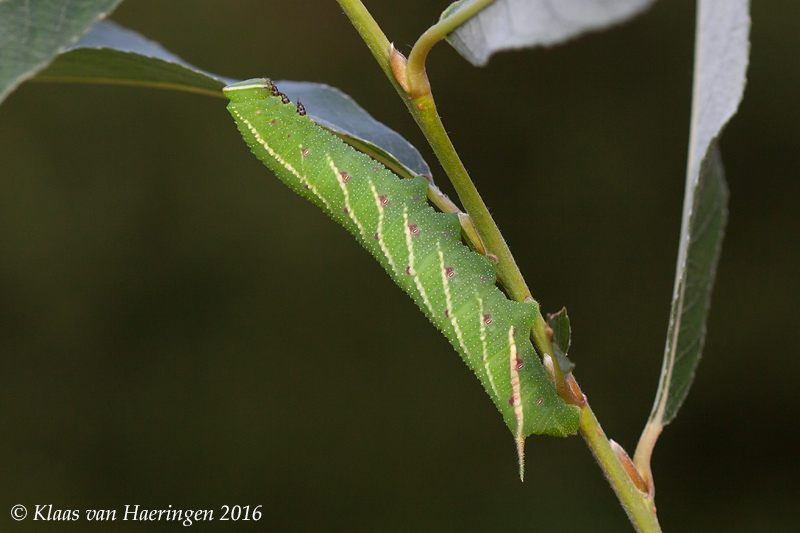
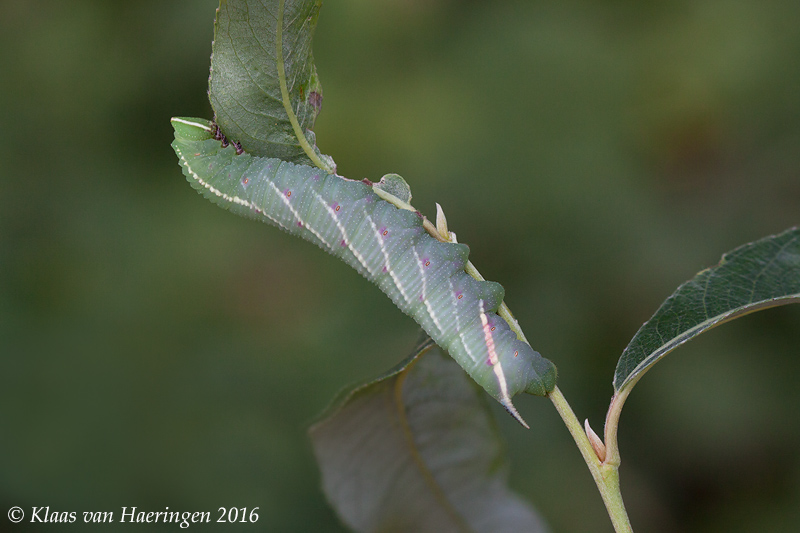
Resembles that of Smerinthus ocellatus. Both colour forms of Smerinthus caecus have some black markings/tubercles on the dorsal surface of the horn, base of the claspers, prolegs, and ventral surface of the head. There may also be red edging to the oblique lateral stripes and spiracles. The white/yellow body tubercles are round and blunt, unlike in Smerinthus ocellatus, where they are sharp and pointed. Like Laothoe amurensis, may go through four or five instars, depending on the quality of the host (Klaas van Haeringen, pers. obs. 2016).
Found throughout July and August.
Major Hostplants. Salix spp.
Minor Hostplants. Populus spp. Occasionally reported from Betula (Izerskiy, 1999), but this requires confirmation.
PUPA: Almost identical to that of Smerinthus ocellatus. The overwintering stage.
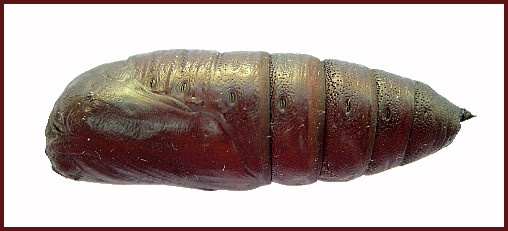
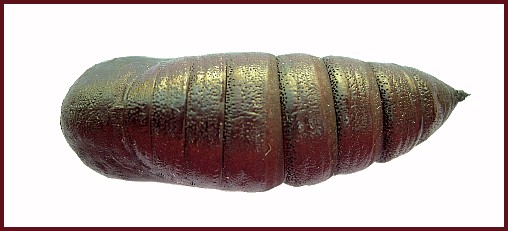
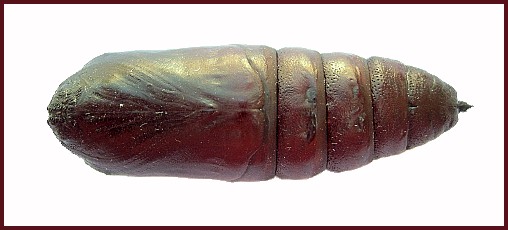
None recorded.
Found in Russia from the outskirts of St. Petersburg (Ivanov et al., 1999) and Moscow to the Urals (Djakonov, 1911; Filipjev, 1912; Sheljuzhko, 1924; Nupponen & Fibiger, 2002; Shovkoon, 2011), and across western Siberia (Zolotarenko, Petrova & Shiryaev, 1978) and northeastern Kazakhstan (Danner, Eitschberger & Surholt, 1998; Dubatolov, [1999]) to the Altai Mountains (Filipjev, 1912; Zolotarenko, Petrova & Shiryaev, 1978; Viidalepp, 1979; Mikhail Skladnyuk, iNaturalist 2015). Although recorded as far north as Arkhangelsk Oblast (Kozlov, Kullberg & Zverev, 2014), the Komi Republic, and Syktyvkar and Yaksha (Tatarinov, Sedykh & Dolgin, 2003), in european Russia, its exact European distribution is not known as it is often confused with Smerinthus ocellatus, as is demonstrated by the history of its discovery in Europe and Siberia (Sheljuzhko, 1924). Djakonov (1911) recounted how a Mr. Duske collected two specimens in the Ural Mountains in the 1890's, but that this was not believed. A further example was captured in 1895 by a Mr. Keller at Aleksino (Tula district). A further four adults were captured in June 1908 at Ekaterinburg (Djakonov, 1911). Soon afterwards, Filipjev (1912) reported rearing an adult female from a larva found at Torbino (Novgorod district). An adult female was also captured by Sheljuzhko (1924) on 22 May 1915 at Belebej-Aksakovo (Ufa district). He went on to speculate whether this species had always been present in Europe and had simply been overlooked (the view held by Djakonov), or whether it had recently spread from Siberia (the view held by Filipjev). The latter view is probably correct (see below).
A single individual has been recorded from Belarus, which may indicate further westward expansion in the range of this species (Serge Yevdoshenko, pers. comm. 2005). Danner, Eitschberger & Surholt, 1998, also mention Lithuania.
Reported from Daghestan, southern Russia (Abdurahmanov, 1999), but this may be a mistake as this region of the Caucasus is well outside the normal range of this species. The individuals in question were probably Smerinthus kindermannii, which, surprisingly, was not recorded.
Extra-limital range. Central and eastern Siberia (Derzhavets, 1984; Izerskiy, 1999), central and southern Yakutia (Chistyakov, 1988; Kaimuk et al., 2005), and the Russian Far East (Primorskiy Krai; Askold Island; Sakhalin Island; Kurile Islands; southern Kamchatka (Zolotarenko, Petrova & Shiryaev, 1978; Chistyakov, 1988)). Also Mongolia (Chistyakov, 1988; Enkhtur, Brehm, Boldgiv, & Pfeiffer, 2021), South Korea (Kim, Nam & Lee, 1982), northern Japan (Hokkaido; northern Honshu) and north-eastern China (provinces of Nei Mongol, Heilongjiang, Jilin, Liaoning, Hebei and Shanxi (Li & Guo, 1990)).
 Return to species list
Return to species list